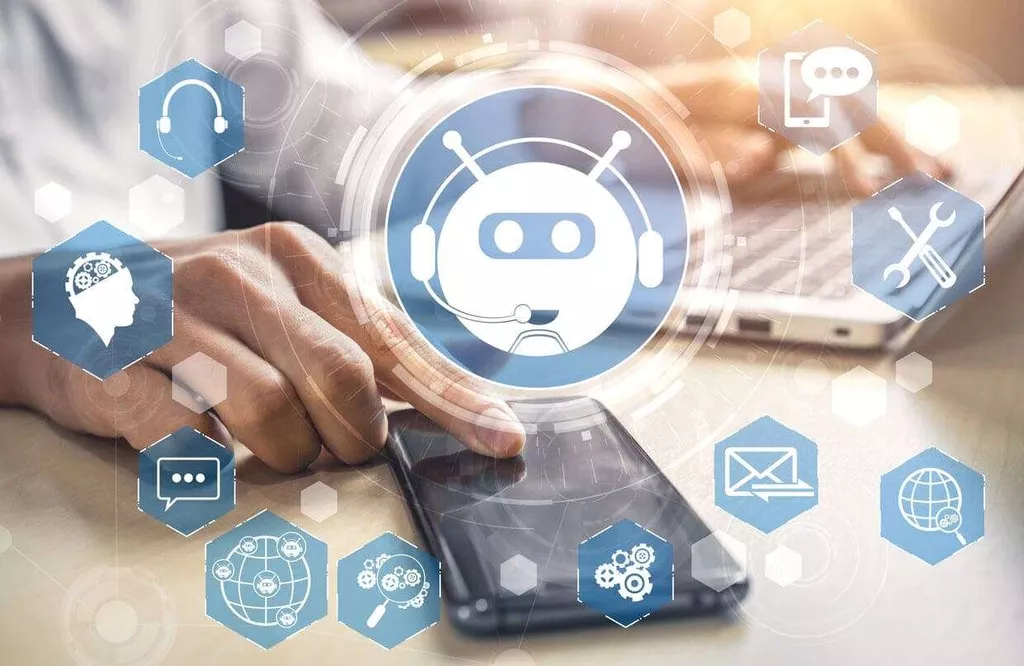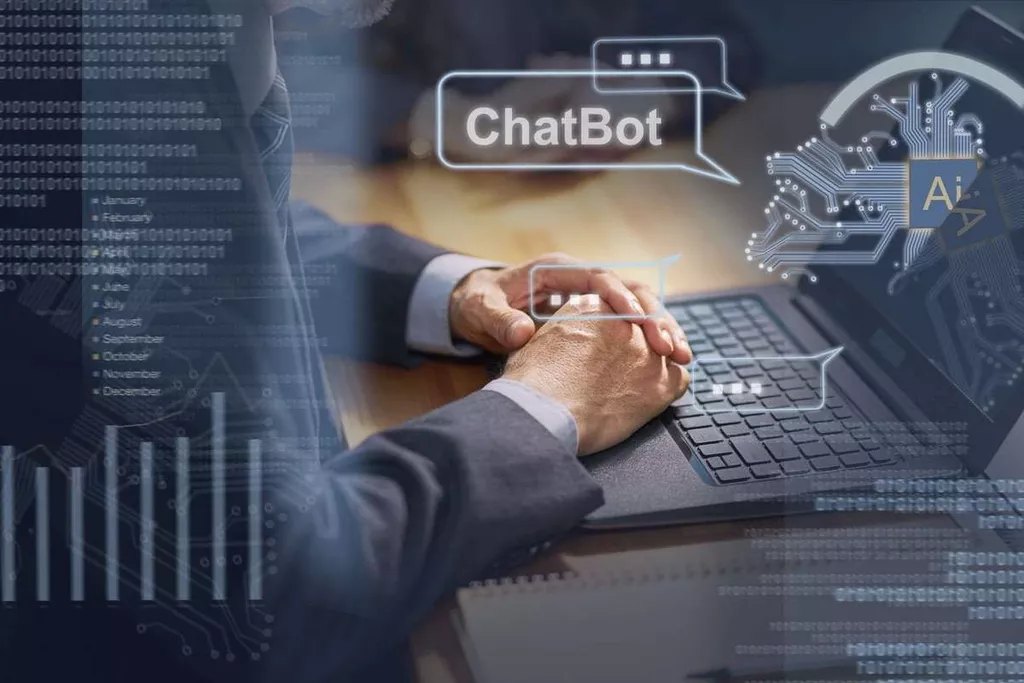Chatbot vs Conversational AI: What is the Difference?
Conversational AI chatbots will understand what is being asked, identify the appropriate response, and then present it in a human-like manner. As a result, it has been a highly effective customer support tool, allowing buyers to communicate with a chatbot via messaging or voice assistants online for instant answers that feel human. The success of this interaction depends on a large quantity of training data, which allows deep learning algorithms to understand human meaning and learn natural language more efficiently than ever before.
As these technologies continue evolving, their embedding across industries illustrates the substantial value in terms of optimized operations, transformed business processes, and enhanced user experiences. Interacting with a chatbot often feels scripted, leading users through pre-planned branches. Sometimes, people think for simpler use cases going with traditional bots can be a wise choice. However, the truth is, traditional bots work on outdated technology and have many limitations. Even for something as seemingly simple as an FAQ bot, can often be a daunting and time-consuming task. There is only so much information a rule-based bot can provide to the customer.
What are the differences between traditional chatbots and Conversational AI?
When most people talk about chatbots, they’re referring to rules-based chatbots. Also known as toolkit chatbots, these tools rely on keyword matching and pre-determined scripts to answer the most basic FAQs. It will help you engage better with your customer in a more natural and personalized way. You will be able to collect and analyze data from customer interaction and offer valuable insight into customer tastes and preferences, and pain points. This can further help you improve your product and service and enhance the overall customer experience. Krista’s conversational AI is used to provide an appropriate response to improve customer experience.

More than half of all Internet traffic is bots scanning material, engaging with websites, chatting with people, and seeking potential target sites. Some bots are beneficial, such as search engine bots that index information for search and customer support bots that assist customers. With AI tools designed for customer support teams, you can improve the journey your customers go through whenever they need to interact with your business.
Conversational AI and the chatbot relationship
By harnessing the latest AI advancements, conversational systems can engage users naturally while comprehending and responding to their specific needs and contexts. Recognizing these expanding capabilities allows businesses to envision valuable applications within their unique environments. Most chatbots are designed for narrow applications like providing basic customer support, completing simple forms, or taking food orders.
The key to conversational AI is its use of natural language understanding (NLU) as a core feature. That is, the way we naturally speak, with slang, abbreviations, mispronunciations, and so on. For instance, with NLP, you don’t need the exact correct syntax for a chatbot to understand you. Depending conversational ai vs chatbot on their functioning capabilities, chatbots are typically categorized as either AI-powered or rule-based. Unfortunately, most rule-based chatbots will fall into a single, typically text-based interface. Remember to keep improving it over time to ensure the best customer experience on your website.
You would not need to invest in an expensive conversational AI platform to, let’s say, offer pizza recommendations based on the user’s ethnicity or dietary restrictions. Conversational AI is the name for AI technology tools behind conversational experiences with computers, allowing it to converse ‘intelligently’ with us. Chatbots are computer programs that can talk to you, introduce themselves, ask you questions, receive your answers, and provide you with a solution. Today, they are used in education, B2B relationships, governmental entities, mental healthcare centers, and HR departments, amongst many other fields.
What is Google’s Bard AI? Here’s everything you need to know – Android Authority
What is Google’s Bard AI? Here’s everything you need to know.
Posted: Sun, 27 Aug 2023 07:00:00 GMT [source]
There’s a big difference between a chatbot and genuine conversational AI, but chatbot experiences can differ based on how they function. Traditionally, chatbots are set to function based on a predetermined set of if-then statements and decision trees that give answers based on keywords. If they have to send a request and wait for a response, it’s not a good customer experience. Tango Card helps businesses drive success with rewards and incentives in the form of digital gift cards. When the company experienced an uptick in help tickets, they turned to conversational AI to provide effective in-app support. In addition to reducing ticket volumes by 10% (while sending more gift cards than ever before), Tango achieved 70% containment and an 83% improvement in average first response time.
However, both chatbots and conversational AI can use NLP and find their application in customer support, lead generation, ecommerce, and many other fields. However, the widespread media buzz around this tech has blurred the lines between chatbots and conversational AI. Even though the terms are often used interchangeably, it’s crucial to understand their differences to make informed decisions for your organization.
They can understand commands given in a variety of languages via voice mode, making communication between users and getting a response much easier. Additionally, with higher intent accuracy, Yellow.ai’s advanced Automatic Speech Recognition (ASR) technology comprehends multiple languages, tones, dialects, and accents effortlessly. The platform accurately interprets user intent, ensuring unparalleled accuracy in understanding customer needs. During difficult situations, such as dealing with a canceled flight or a delayed delivery, conversational AI can offer emotional support while also offering the best possible resolutions. It can be designed to exhibit empathy, understand your concerns, and provide appropriate reassurance or guidance. Your customer is browsing an online store and has a quick question about the store’s hours or return policies.
- For instance, in the hospitality industry, hotels use chatbots to handle guest inquiries, room reservations and concierge services.
- These basic chatbots are often limited to specific tasks such as booking flights, ordering food, or shopping online.
- Conversational AI is a sophisticated form of artificial intelligence (AI) that simulates human-like conversations through automated messaging and voice-enabled applications.
- In this example by Sprinklr, you can see the exact conversational flow of a rule-based chatbot.
They have a much broader scope of no-linear and dynamic interactions that are dialogue-focused. Here are some of the clear-cut ways you can tell the differences between chatbots and conversational AI. Over time, you train chatbots to respond to a growing list of specific questions.
Conversational AI in the enterprise
Instead of wasting time trying to decipher the pre-defined prompts or questions created by a traditional chatbot, they will get a simplified interface that responds to whatever questions they may have. In some rare cases, you can use voice, but it will be through specific prompting. For example, if you say, “Speak with a human,” the chatbot looks for the keywords “speak” and “human” before sending you to an operator. You can create bots powered by AI technology and NLP with chatbot providers such as Tidio. You can even use its visual flow builder to design complex conversation scenarios.
AI-powered chatbots have a robust mechanism to resolve complex queries and later administer them. Fourth, conversational AI can be used to automate tasks, such as customer support or appointment scheduling that makes life easier for both customers and employees. Bots are tools designed to assist the user, by performing a variety of tasks. Many bots can be found on social networking sites, search engines, streaming platforms, news aggregators, and forums like Reddit.
They are often implemented separately in different systems, lacking scalability and consistency. When you switch platforms, it can be frustrating because you have to start the whole inquiry process again, causing inefficiencies and delays. A customer of yours has made an online purchase and is eagerly anticipating its arrival. Instead of repeatedly checking their email or manually tracking the package, a helpful chatbot comes to their aid. It effortlessly provides real-time updates on their order, including tracking information and estimated delivery times, keeping them informed every step of the way. When choosing the appropriate AI-powered solution, such as a chatbot or conversational AI, businesses need to weigh their options carefully.
Conversational AI, on the other hand, brings a more human touch to interactions. It is built on natural language processing and utilizes advanced technologies like machine learning, deep learning, and predictive analytics. Conversational AI learns from past inquiries and searches, allowing it to adapt and provide intelligent responses that go beyond rigid algorithms. Chatbots and conversational AI are often used interchangeably, but they’re not quite the same thing. Think of basic chatbots as friendly assistants who are there to help with specific tasks. They follow a set of predefined rules to match user queries with pre-programmed answers, usually handling common questions.

This tool is a part of intelligent chatbots that goes through your knowledge base and FAQ pages. It gathers the question-answer pairs from your site and then creates chatbots from them automatically. For example, conversational AI technology understands whether it’s dealing with customers who are excited about a product or angry customers who expect an apology. The difference between a chatbot and conversational AI is a bit like asking what is the difference between a pickup truck and automotive engineering. Pickup trucks are a specific type of vehicle while automotive engineering refers to the study and application of all types of vehicles.
But instead, they’ll be a great helping hand and ensure the support that humans need. They understand limited vocabulary or predefined keywords, so they don’t improve or learn themselves over time. Thereby, businesses worldwide are embracing automation to speed up formerly time-consuming processes and close operation gaps that otherwise involve hours of spreadsheet work. And no doubt, businesses using automation have seen higher revenue growth and higher profits than those who don’t. Krista orchestrates software release management processes across the DevOps toolchain and stakeholders using an easy-to-follow conversational AI format. Cleverbot was ‘born’ in 1988, when Rollo Carpenter saw how to make his machine learn.
Another chatbot example is Skylar, Major Tom’s versatile FAQ chatbot designed to streamline customer interactions and enhance user experiences. Skylar serves as the go-to digital assistant, promptly addressing frequently asked questions and guiding visitors to the information they seek. With Skylar at the helm, Major Tom offers seamless customer support, delivering top-notch marketing solutions with every interaction. Chatbots are not true artificial intelligence because they function based on if/then statements and decision trees. True AI does not rely on human effort to create decision trees for incoming support queries to then try to answer queries based on keyword matching.


أحدث التعليقات